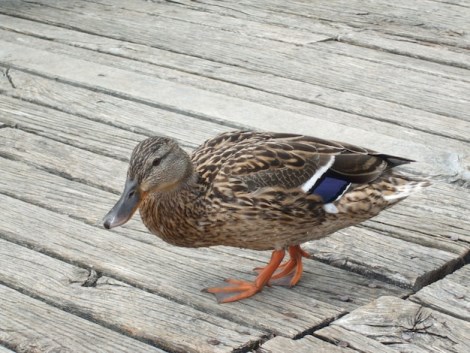

Ducks are highly adaptable creatures that can survive in various environments.
Ducks have been domesticated by humans for over 4,000 years.
Male ducks are called drakes, while females are called hens.
Ducks have a specialized gland called the preen gland, which helps to waterproof their feathers.
Ducks have webbed feet that are designed for swimming and walking on land.
Ducks are excellent flyers and can reach speeds of up to 60 miles per hour in the air.
Different duck species have different vocalizations, ranging from quacks to whistles.
Ducks are omnivorous, meaning they eat both plants and small insects or animals.
Ducks have a unique ability to rotate their heads almost 360 degrees.
Duck eggs are larger than chicken eggs and have a slightly stronger flavor.
Ducks are social animals and often form tight-knit groups called rafts.
The longest recorded flight by a wild duck was over 8,000 miles.
Ducks have excellent vision both above and below water.
Ducks have a specialized bill that helps them filter food from water.
Ducks molt their feathers once a year, which leaves them flightless for a short period of time.
Ducks have been depicted in various cultures throughout history as symbols of fertility and loyalty.
Ducks have a streamlined body shape that allows them to glide through water effortlessly.
Ducks are believed to be closely related to swans and geese.
The lifespan of a duck can vary depending on the species, but many live between 5-10 years in the wild.
Ducks have a unique ability to drink saltwater by excreting excess salt through specialized glands.
Ducks have been known to display playful behavior, such as sliding down muddy banks or engaging in water fights.
Ducks have been used in various scientific studies to better understand migration patterns and animal behavior.
Ducks have a highly developed sense of hearing that helps them detect predators from a distance.
Some species of ducks, such as the Mandarin duck, have extremely colorful and elaborate plumage.
Ducks are capable of sleeping with one eye open, allowing them to remain alert to potential threats.
Ducks are native to every continent except for Antarctica.
Ducks have been domesticated for their eggs, meat, and feathers since ancient times.
Ducks are important for maintaining wetland ecosystems as they help control insect populations and disperse seeds.
The largest species of duck in the world is the Muscovy duck, which can weigh up to 13 pounds.
Ducks have a strong instinct for motherhood and will often fiercely defend their young.
Ducks are known for their waddling gait on land, which is caused by their legs being positioned far back on their bodies.
Ducks have a complex communication system that includes various vocalizations, head movements, and body postures.
Ducks are excellent swimmers and can dive underwater to search for food.
Ducks have a specialized tongue that helps them filter small food particles from water.
Ducks have a layer of fluffy down feathers underneath their outer feathers, which helps to insulate them from the cold.
Ducks have a high metabolic rate, which allows them to generate enough energy for long migrations.
Ducks are monogamous animals, meaning they mate with one partner for life.
Ducks have a unique digestive system that allows them to extract nutrients from vegetation that would be indigestible to other animals.
The fastest recorded flying speed of a duck was clocked at 98 miles per hour.
Ducks have a natural oil on their feathers that helps to repel water and keep them dry.
Ducks have been used in fables and children’s stories throughout history, often representing traits such as curiosity and resourcefulness.
Ducks have a three-chambered stomach that allows them to digest a wide variety of food types.
Ducks have a keen sense of direction and can navigate using landmarks and the Earth’s magnetic field.
Ducks are highly adaptable to human environments and can often be found in parks, ponds, and even urban areas.
Ducks have a reputation for being hardy and resilient creatures, able to survive in diverse habitats and climates.
Around the world, coffee enthusiasts enjoy Monin coffee concentrate since it is a multipurpose product. Conveniently combining…
The Importance of Choosing the Right Shower for Your Bathroom Renovating your bathroom can be…
Usain Bolt holds the record for the fastest 100-meter sprint in history.Bolt was named Sportsman…
Love is in the air... and it smells suspiciously like chocolate!Roses are red, violets are…
Life's a beach, take a picture and relax.Sun, sand, and salty kisses. That's what beach…
Hungary is home to the largest thermal water cave system in the world.The Rubik's Cube…